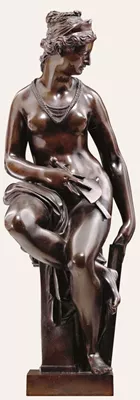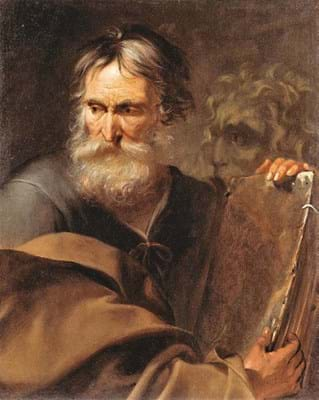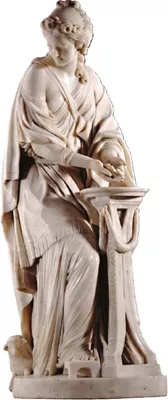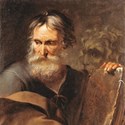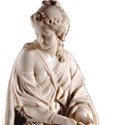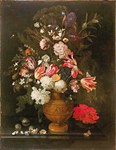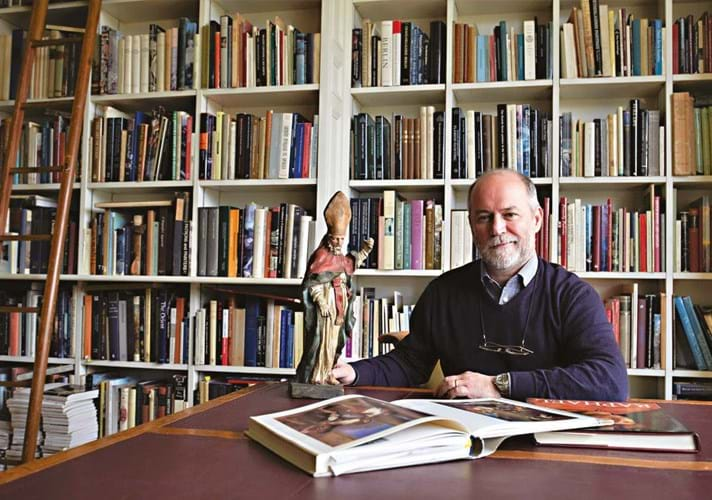
Some clouds do have silver linings.
After 30 years that spanned going from a Leeds semi-detached to the rarefied worlds of TEFAF Maastricht and Masterpiece, European sculpture specialist Tomasso Brothers Fine Art had scaled the heights and was ready to take stock.
For the art and antiques sector, as for many countless others, much has been lost across one year of Covid-19 lockdown.
Yet the past 12 months of closed premises and cancelled fairs have provided the time for the gallery to reassess its business – as changing tastes and the emergence of Tomasso’s next generation of family dealers suggested it was time to evolve the business model.
Founded in 1993 by brothers Dino, Giovanni (‘Johnny’) and Raffaello (‘Raffy’), following a childhood steeped in Renaissance art, the gallery is based in the grand surroundings of Bardon Hall, Leeds. The business is now helmed by Dino and Raffaello – Giovanni having moved on to run his own business.
Best known for bringing important European Renaissance sculpture, bronzes and Old Masters to market, for 30 years Tomasso Brothers Fine Art has made significant sales to prestigious museums and galleries across the globe.
As the gallery prepares for an auction at Sotheby’s and unveiling a pared-down rebrand to reflect wider family involvement, Dino Tomasso talks to ATG from his home in the Dales – his personal collection of 17th century Yorkshire oak just visible in our Zoom call.
ATG: Can we start at the beginning – how did Tomasso Brothers Fine Art come to be?
DT: We were fortunate to be born into an entrepreneurial Italian family that had emigrated to the UK back in 1865. We grew up in a scholarly environment – literally having to climb over Renaissance bronzes, Old Master pictures and auction catalogues to get into bed.
That said, we weren’t encouraged to study in a formal environment and left school at the earliest opportunity – with few qualifications between us!
You’ve made up for that since though…
We did. From a young age Johnny, Raffy and I knew all the names of the great European artists, from spending thousands of hours in museums, at auctions and reading books.
That quest for scholarship has stuck with us. Over the past 25 years we’ve put together one of the world’s best art libraries on European sculpture and Old Master paintings, helped by our acquisition of David Carritt’s library as well as the Artemis Gallery library.
You started with Old Masters but then sculpture and bronzes became the focus.
It became harder to build a business solely around Old Master paintings. We used to be able to buy an Old Master in the regional auction rooms, consign them to Sotheby’s and every now and again one would take off. The arrival of the internet has made this a rarer occurrence.
We’ve always had a passion for European sculpture, which for us became a much more concentrated focal point, so we veered in that direction.
You’re based in Bardon Hall in Leeds and London’s Jermyn Street, but things were more modest in the early days…
Yes – we actually used Johnny’s semi-detached house in Leeds as our first base when we formed Tomasso Brothers Fine Art in 1993.
To store our stock, though, we converted the garage into an impregnable underground bunker, with steel doors and walls which were a foot thick.
We had a great time building the business, even though you couldn’t swing a cat in that house. There was a lot of laughter back then and I’m glad to say that although the business has become more serious, we still manage to keep good humour between us.
Who does what in the business now?
I mostly deal with clients and the administration and Raffy, who is mainly based at Bardon Hall, is non-stop searching for objects. Raffy will source a work of art and, in non-Covid-19 times, it would usually be myself who travels to see it in the flesh. In the past I have received a phone call from him late at night saying, ‘I’ve just bought an important bronze for a small fortune’, proving that it’s always been an impulsive business for us.
Did you have a target market in mind in the beginning?
No. We’ve never ‘run a business’ as such – we are voracious collectors who have to make a living. I’m an art dealer at heart and can enthuse about an object that is priced at £500 as much as one at £5m.
Can I really buy something for £500 at Tomasso?
For that amount, you could buy a beautiful 17th century piece of English oak furniture, an Italian Renaissance bronze or an antiquity.
At the other end of the scale, for £5m you could buy a highly important Renaissance bronze by a great master, for instance the Flemish sculptor Giambologna (c1529-1608), or a magnificent baroque marble by Paul Heermann (1673-1732) for around £2m. It’s all relative.
Where do you most of your sourcing?
It’s a real mixture and you would be extremely surprised where we have managed to rediscover some beautiful works of art. We do buy a lot in the US, I’d say around 35-40% of our stock ranging from small provincial auction houses to Sotheby’s and Christie’s New York.
We also source in Italy and France, and of course when we buy an item there, we have to make sure an international export certificate is granted.
Who do you sell to?
We’re fortunate to have some of the world’s greatest private collectors of European works of art as clients and friends, most of whom are based in the US. We sell to institutions too, some in Europe but more often than not in the US.
While Asia is not currently a market for us either for sourcing or selling, I’m quietly confident that sometime in the not too distant future we will help a Chinese collector put together a collection of European works of art.
You opened your first gallery in London in 2010. Hailing from Leeds, did you feel like outsiders?
A little at first, but people quickly began to appreciate us for being down to earth, genuine and enthusiastic. All dealers at whatever level speak the same language of love for the objects. We each have different levels of knowledge but if you’re enthusiastic, whether you’re at the top of the tree or working your way up, we all respect each other. The objects are the glue that binds us.
That’s why I’m so enthusiastic about being recently voted onto BADA’s council (ATG No 2482) – I’m going to enjoy connecting with members and helping with their needs in the business.
You’ve been on the board of trustees of TEFAF since 2017. What will you bring to the BADA council?
Hopefully, I will bring ideas from my TEFAF experiences to help BADA move forward – such as more personalised communication, a better website and with Louise as the perfect chairperson. The council members all speak the same language – that common denominator that art and antiques dealers have.
You’re part of another club – dealers who do the major international fairs
We started as antique dealers who became art dealers and have worked our way up to become part of Masterpiece London, TEFAF Maastricht and the Paris Biennale.
Having opened a gallery in London in 2010, we did 10 fairs that year as we understood what we wanted to do with the Tomasso brand.
How have the digital versions of fairs worked out?
We did London Art Week Digital and TEFAF Online in 2020, which were very elegant, though you do get very polarised views about online fairs. I’m part of a TEFAF committee developing online events and it’s definitely part of the future, but you have to make sure that these events are managed and developed in the correct manner.
The first physical fair we’re doing this year is TEFAF Maastricht in September and everyone is looking forward to it.
Do you have concerns about TEFAF Maastricht, given that Masterpiece has been cancelled this year?
It’s understandable that some people are a little apprehensive about international visitor numbers but we are still six months away and the world will change rapidly in the meantime. The UK is leading the way with vaccinations and after the summer the rest of Europe will hopefully have caught up.
How are you coping with Anti-Money Laundering (AML) requirements?
It’s something we cannot avoid. We work with an excellent company called Arcarta, which provides a due diligence platform for galleries.
What I do like about the AML regulations is that, while we have to conduct AML checks on all prospective buyers, the final decision on whether to proceed with the sale is left with each individual gallery. It’s a very intelligent way of dealing with money laundering.
It has created bureaucracy but unfortunately sometimes the public perception of the art world can be that it is tainted. We need to show transparency to demonstrate that this is not commonplace. The amount of money laundering in the art market is miniscule compared to some other sectors.
You didn’t vote for Brexit. Can the industry adapt to the new customs procedures and other red tape it involves?
We’ve been through worse. For BADA members, we have Ossad Art Management giving fantastic import and export advice through workshops and a helpline.
It’s all a work in progress and will take a year for dealers to get into a formula for their own separate businesses. Meanwhile many of my friends in Europe are truly heart-broken that we’ve left.
We’re talking a year on from the first lockdown. How has the pandemic affected your business?
Commercially it has impacted on us but we’ve been able to concentrate on the administrative side of the business during the lockdowns. In the past I was on a plane almost every other day for 20 years. But the last 12 months has allowed Raffy and I to spend every day at Bardon Hall going through the detail of the last 30 years.
We got some help through the governmentbacked Coronavirus Business Interruption Loan Scheme (CBILS) to continue to trade through the crisis. We should be open in London and Leeds as soon as the government allows.
In your lockdown assessment of the business, what did you conclude?
We’ve decided to refine the business as we have more than 3000 objects – a lot of sculpture, furniture and hundreds of paintings – and that’s too much to manage even for the next generation! In the good old days we were buying and selling thousands of objects a year, but as our business refined, volume became less important.
It’s a sad fact that you can spend the same amount of time dealing with the sale of an object at £2000 as one at a much higher value and therefore it makes more sense for us, going forward, to concentrate on more important objects. In the past 10 years tastes and price structures have changed, none more so than an area which is very dear to our hearts – the English furniture market.
Is the Tomasso sale at Sotheby’s at the end of April part of that refinement?
Putting items into auction is part and parcel of running an art business these days – you need to have many irons in the fire. With so much exposure of objects across multiple platforms now, we have to try and play a part in all of them or you lose out. It’s taken me a while to understand that.
All businesses evolve and we will now focus on bringing more connoisseurship to the fore. It’s always been a knowledge-based business rather than a commercially minded one, and so we’re trying to refine that knowledge and pass it on to the next generation.
Your rebrand as ‘Tomasso’ launches this week. Does this reflect the firm’s succession planning?
It’s a more inclusive brand to reflect the next generation of Tomasso art dealers who are now part of the business. Raffy’s son Lorenzo has been working with us for four years, my other nephew Dante for three years, my son Marcello has been working with us this year before going to university – and they all live together in Bardon Hall.
Lorenzo has only ever wanted to be an art dealer and from the age of eight he could name every single Roman emperor from 27BC to 491AD. Dante is our sister’s son and has taken to the business like a duck to water. Like us, they do it for the love of the objects.
Do you still have an emotional connection with Italy?
Absolutely. I was fortunate to go last August between lockdowns but I always have a yearning for Italy. Artistically it’s the greatest country on the planet – you can walk into the smallest village church and see a masterpiece.
Back to the Sotheby’s auction: is there anything you’re particularly sad to part with?
Yes – about 175 lots! I hate selling anything. Part of me disappears when we sell something, regardless of its monetary value.
Tomasso milestones
• 1865 Tomasso family emigrate from Italy to Britain, settling in Leeds.
• 1993 Brothers Dino, Giovanni (‘Johnny’) and Raffaello Tomasso set up dealership at Bardon Hall, Leeds.
• 2008 First international exhibition: Scultura, New York.
• 2010 Opens first London gallery in Pimlico, London.
• 2012 Exhibits at TEFAF Maastricht for first time. Contributes to establishing the landmark exhibition Bronze at the Royal Academy of Arts in London.
• 2017 Relocates London gallery within St James’s to Marquis House, 67-68 Jermyn Street. Dino Tomasso joins the board of trustees of TEFAF, the organisation behind the TEFAF Maastricht and TEFAF New York fairs.
• 2019 Tomasso Brothers donates £5000 to help The Barber Institute of Fine Arts, Birmingham, acquire the c.1825 marble group Greyhound with Puppies by British-born sculptor Joseph Gott (1786-1860) for £55,000.
• 2021 Change of gallery name to ‘Tomasso’ dropping ‘Brothers Fine Art’ from the company’s brand to reflect new generation of Tomasso family dealers; plans to reopen London and Leeds galleries in summer after Covid-19 shutdown if government guidelines permit.
Earliest discovery
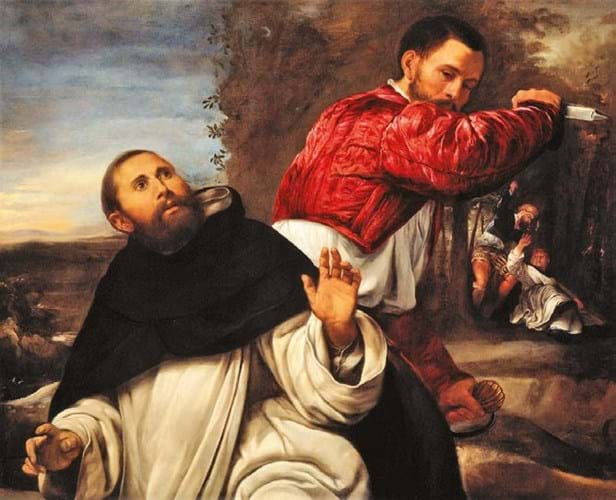
Oil on canvas 'The Death of Saint Peter Martyr' by Giovanni Girolamo Savoldo. Measuring 3ft 9½in x 4ft 7½in (1.15 x 1.41m) and inscribed 'Credo in Dio', it was sold by Tomasso Brothers to the Art Institute of Chicago in 2001.
The Tomasso Brothers’ earliest discovery – “our first major find, in terms of its importance in the history of art” – happened in the firm’s early days in 1994.
That year Dino Tomasso and his brother Raffaello walked into an auction house in the north of England and there on a table, unstretched and rolled up, was a “filthy dirty” painting.
Dino recalls the brothers thinking they had stumbled across a Titian. “We were so excited when we bought it and through the help and keen eye of a close friend, we managed to come up with an attribution to Giovanni Girolamo Savoldo (c.1480-c.1548).”
The brothers went home to their library to find the catalogue from a Savoldo exhibition held a few years before. “In there were two drawings for the two main figures in the painting.”
With a possible provenance of ownership by the 16th Earl of Shrewsbury, John Talbot (1791-1852), and by descent in the Talbot family, a member of that family is thought to have given the painting to St Alban’s Roman Catholic Church in Macclesfield, Cheshire. Tomasso Brothers Fine Art sold the painting to the Art Institute of Chicago in 2001.
Saying goodbye to old friends
From April 21-29, Sotheby’s is hosting a timed online sale of a selection of Tomasso Brothers Fine Arts’ works.
“The 200 lots we’ve chosen give an overview of what we’ve been interested in over the past 30 years – a cross-section of everything from Oceanic Art to Old Master paintings, antiquities, European sculpture, great English furniture and ceramics,” Dino Tomasso says.
The Tomasso: The More a Thing is Perfect auction is “something we’ve thought about doing for years – to showcase Tomasso Brothers Fine Art in this way”.
With more than 3000 objects in stock, Tomasso says the gallery “also needs the space. Art dealing is a journey where you meet friends and at a certain point you have to part with them”.
Bidding opens on sothebys.com on April 21.

